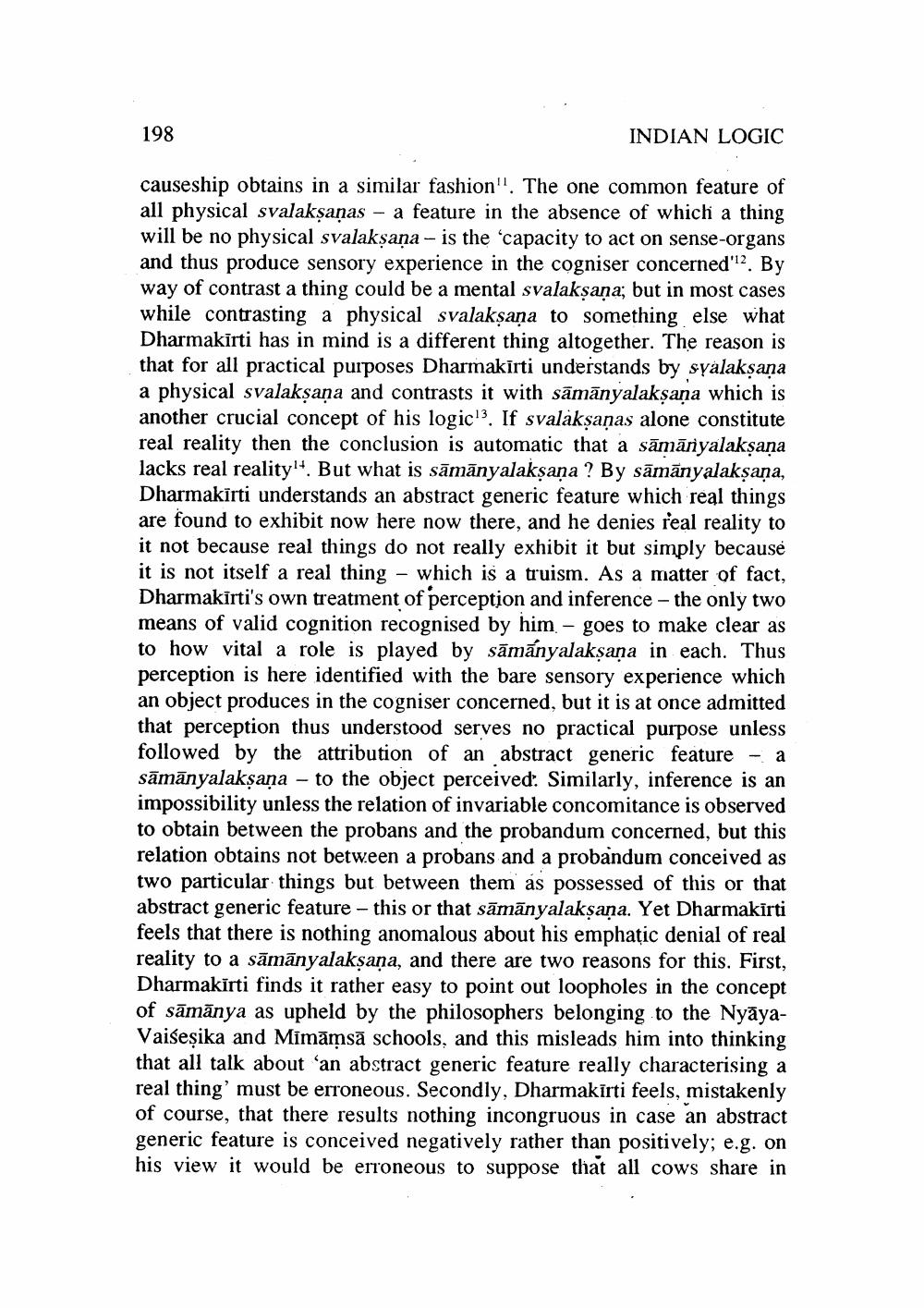________________
198
INDIAN LOGIC
causeship obtains in a similar fashion". The one common feature of all physical svalaksanas - a feature in the absence of which a thing will be no physical svalakṣaṇa - is the capacity to act on sense-organs and thus produce sensory experience in the cogniser concerned"2. By way of contrast a thing could be a mental svalaksaņa; but in most cases while contrasting a physical svalaksana to something else what Dharmakīrti has in mind is a different thing altogether. The reason is that for all practical purposes Dharmakirti understands by syalaksana a physical svalaksana and contrasts it with sāmānyalaksana which is another crucial concept of his logic!3. If svalakṣaṇas alone constitute real reality then the conclusion is automatic that a sāmāriyalaksana lacks real reality!+. But what is sāmānyalaksana ? By sāmānyalaksana, Dharmakirti understands an abstract generic feature which real things are found to exhibit now here now there, and he denies real reality to it not because real things do not really exhibit it but simply because it is not itself a real thing - which is a truism. As a matter of fact, Dharmakīrti's own treatment of perception and inference - the only two means of valid cognition recognised by him. - goes to make clear as to how vital a role is played by sāmányalaksana in each. Thus perception is here identified with the bare sensory experience which an object produces in the cogniser concerned, but it is at once admitted that perception thus understood serves no practical purpose unless followed by the attribution of an abstract generic feature - a sāmānyalakṣaṇa - to the object perceived: Similarly, inference is an impossibility unless the relation of invariable concomitance is observed to obtain between the probans and the probandum concerned, but this relation obtains not between a probans and a probandum conceived as two particular things but between them as possessed of this or that abstract generic feature - this or that sāmānyalaksana. Yet Dharmakirti feels that there is nothing anomalous about his emphatic denial of real reality to a sāmānyalaksaņa, and there are two reasons for this. First, Dharmakirti finds it rather easy to point out loopholes in the concept of sāmānya as upheld by the philosophers belonging to the NyāyaVaisesika and Mimāmsā schools, and this misleads him into thinking that all talk about 'an abstract generic feature really characterising a real thing' must be erroneous. Secondly, Dharmakīrti feels, mistakenly of course, that there results nothing incongruous in case an abstract generic feature is conceived negatively rather than positively; e.g. on his view it would be erroneous to suppose that all cows share in




